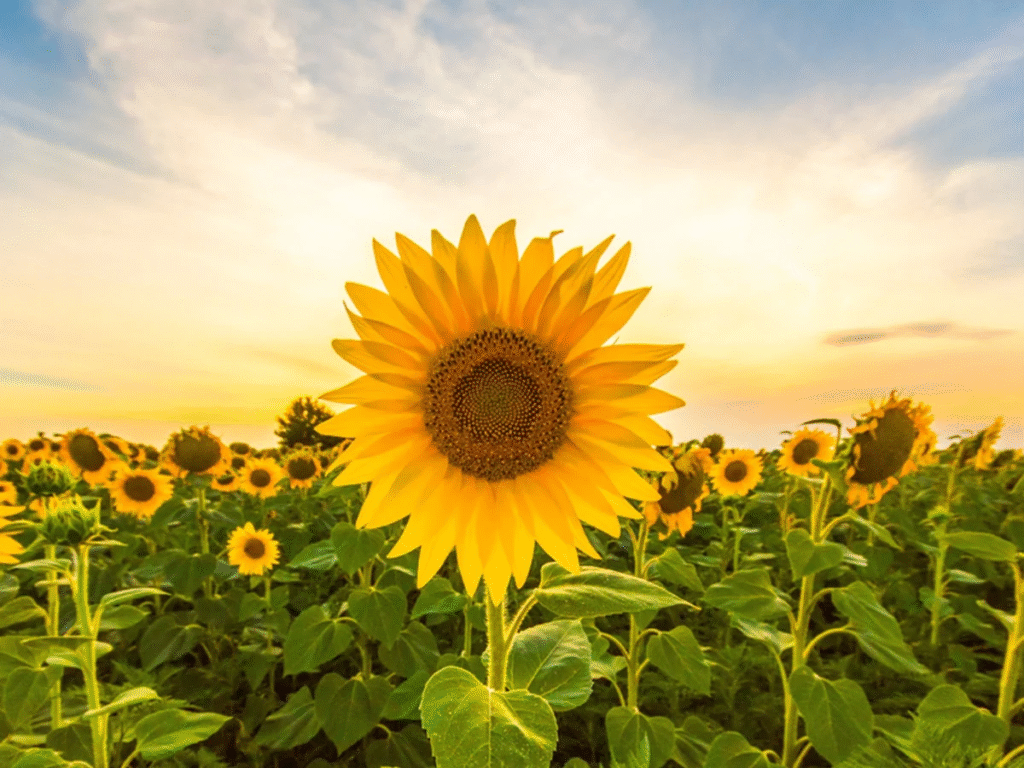
Know Approximately Sunflower Cultivating in India: A Total Direct for 2025
Sunflower cultivation in India plays a crucial part in fortifying the country’s edible oil industry, while providing a beneficial job to thousands of ranchers. With the Indian government effectively working to restore sunflower development and decrease reliance on imported consumable oils (Budgetary Express, April 28, 2025), this directly offers a brief outline of the fundamental hones for successful sunflower cultivation in 2025.

Overview of Sunflower Cultivation in India
Sunflower is among India’s most profitable oilseed crops, positioning fifth after food grains in financial significance (pjtau.edu.in). It flourishes over numerous states—Karnataka, Andhra Pradesh, Maharashtra, Odisha, Bihar, and Tamil Nadu—which offer perfect climatic and soil conditions for development (Testbook, Walk 26, 2025).
Government activities beneath the National Mission on Consumable Oils point to grow sunflower development by providing financial support, advancing summer editing, and building up handling units to support agriculturists (Money Express, April 28, 2025).
Ideal Climate and Soil Conditions
Sunflowers develop best in warm and sunny climates with well-drained loamy soils. The ideal temperature for development ranges between 20°C and 30°C. Appropriate soil planning through 2–3 rounds of furrowing and the expansion of 5–10 tons of yard fertilizer (FYM) per hectare progresses richness and structure.
Best Seed Assortments for 2025
Selecting high-yield and disease-resistant cross-breeds is key to victory. Prevalent choices include:
KBSH-44 – Tall oil substance and flexibility (icar-iior.org.in)
DRSH-1 – Fabulous abdicate and oil quality
RSFH-700 – Perfect for Karnataka’s conditions (Krishak Jagat, April 6, 2025)
KBSH-78 – Develops in 82–85 days
TilhanTech-SUNH-1 & SUNH-2 – Early developing and disease-resistant crossovers (Krishi Jagran, February 28, 2025)
Sowing and Water System Practices
Sowing periods change: Kharif (June–July), Rabi (October–November), and Summer (January–February). Keep up a 60 cm push dividing, and a 30 cm plant dividing, with seeds put 3–4 cm deep.
Sunflowers require standard moisture, particularly during the blooming and seed filling stages. Dribble water system is the most effective strategy, regularly requiring 3–4 irrigations depending on soil and rainfall.
Fertilisation and Weed Control
Apply manures based on soil test recommendations, generally 60–90 kg Nitrogen, 60–90 kg Phosphorus, and 40–60 kg Potassium per hectare. Part of the nitrogen application is between the sowing and pre-flowering stages.
Pest, Infection, and Collect Management.
Major bugs, include aphids leafhoppers, and head borers. Coordinates the Bother Administration (IPM), and biopesticides to offer assistance to limit harm. Common illnesses such as Wool Buildup, and Alternaria Leaf Spot can be overseen with safe assortments and trim rotation.
Harvesting is perfect when the bloom back turns yellow and the bracts turn brownish. Seeds ought to have 12–15% dampness substance some time recently collecting. Post-harvest, dry and store seeds in a clean, ventilated range to prevent spoilage.
Economic and Future Prospects
Sunflower development covers around 1.48 million hectares in India (khetigaadi.com). With moved forward crossovers and strategies, agriculturists can accomplish yields of 1.5–2.5 tons per hectare. Karnataka remains the best maker, whereas other states are quickly growing their development regions. The government aims to diminish edible oil imports from 57% to 28% by 2032, positioning sunflower as a key player in achieving this goal.
Conclusion
Sunflower cultivation in India presents a promising road to a feasible salary and national self-reliance in edible oil production. By receiving progressive development tools, utilizing advanced seed varieties, and leveraging government activities, ranchers can improve efficiency and productivity. With proceeded advancement and mindfulness, sunflower cultivating is set to sparkle indeed brighter in 2025 and past.






